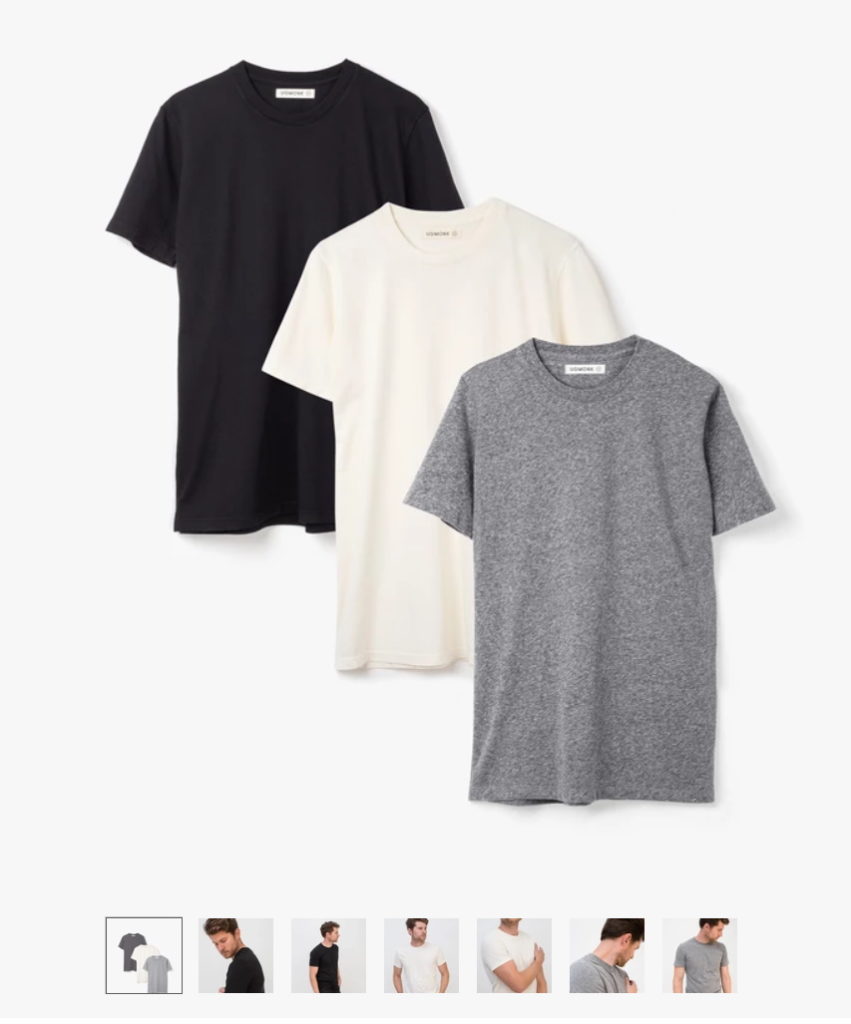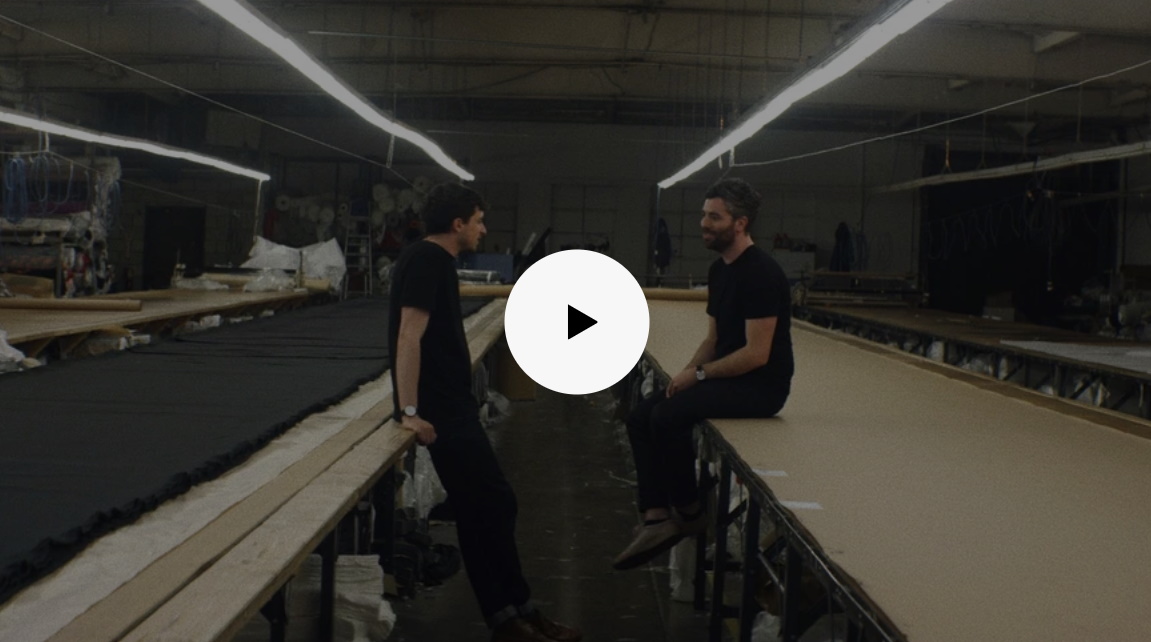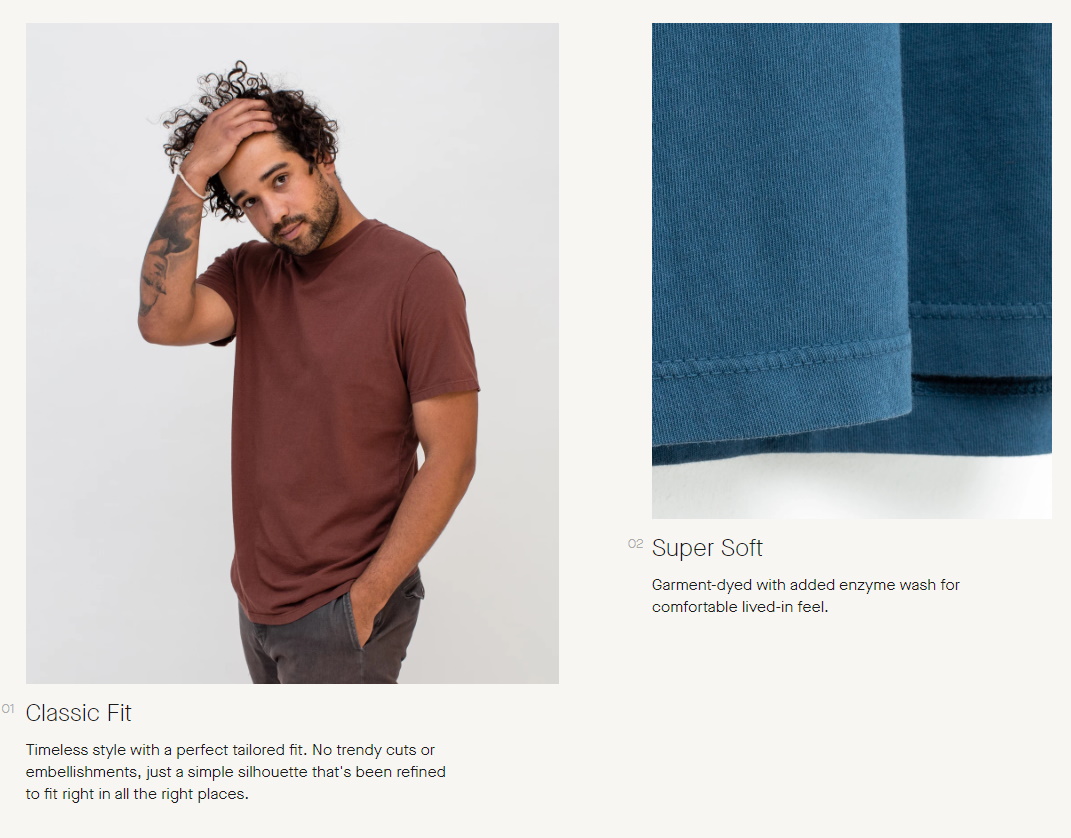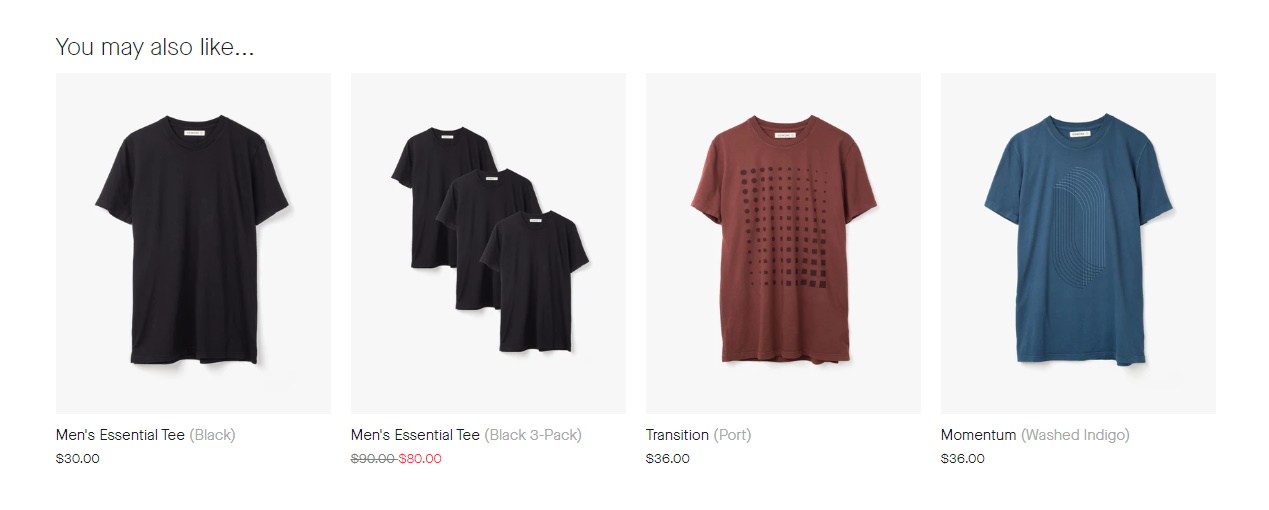Product Headline
This template is based around this product page from Ugmonk and is meant to be read in conjunction with my website copywriting guide.
Your product description goes here. Explain the product’s value, either by explaining the problem it solves or by highlighting the product’s key features and corresponding benefits.
- “Enzyme washed for added softness”
- “Dye process creates variations of color, making each tee truly unique”
- “Tees are pre-shrunk, [so] they will fit the same [forever]”
Each of these lines describes a feature of the product and then follows it with a description of the corresponding benefit.
This is really important. If the product description just said “enzyme washed”, would you know what that means? Most consumers probably wouldn’t, and as a result, they wouldn’t understand why it’s an important feature.
3-Pack: $90 $80
Your product details go here. These are usually technical specs in bullet form.
Example form Ugmonk:
- Cut, sewn, and dyed in Los Angeles, CA, USA
- Garment dyed
- Pre-washed & pre-shrunk
- 100% ringspun cotton (Black and Bone) / 50% Polyester, 37.5% Cotton,
- 12.5% Rayon (Triblend Heather Gray)
- Model is 5’11” wearing size S

Product or Brand Story
A good product page is designed to give visitors everything they need without scrolling, so we have to keep the product description relatively brief.
Once we have scrolled past the fold, however, we have the opportunity to dive into the product story for the first time or go deeper into the story you touched on in the description
If your product doesn’t really have an interesting story, you can always opt to go with a brand story instead, focusing on what makes your brand unique and why it was created. The reader can then infer that the positives of the brand will translate to the product itself.
Ugmonk really shows us a best-case scenario on this front. Not only do they have a well-produced video telling the story of their product, but they even offer the ability to click over to a full story landing page. What makes this especially powerful is that we are talking about t-shirts here, which are effectively a commodity product, but Ugmonk is removing themselves from the commodity playing field by showing you their unique manufacturing process and it’s benefits.
You don’t have to go this far, but understand that the amount of effort you invest into telling the story of your product will communicate to your customers something about how seriously you take the product itself.

More Visuals If Desired

“You Might Also Like”
If there is one thing ecommerce vendors everywhere have to thank Amazon for, it’s the “You Might Also Like” section. Amazon titles this “Customers Who Viewed This Also Viewed”, but regardless of how you title it, suggesting additional, complementary or alternative items has become a staple inclusion on every product page.
Again, you won’t be doing much writing here, but whether you are creating your own algorithm for this or using one of numerous available applications to do it for you, getting these suggestions right is important.

Reviews
Reviews are your social proof on a product page. You want as many as you can get and you want them to be descriptive. As people become more and more wise to fake reviews, they are going to increasingly ignore large segments of short 5-star reviews.
This is one area where Ugmonk needs to do some work. They have only one review on this product page, which seems especially weird on a page with its own product story video. My guess would be that this specific tee pack is relatively new and simply hasn’t accumulated reviews yet, but regardless, it’s going to hurt them here.




